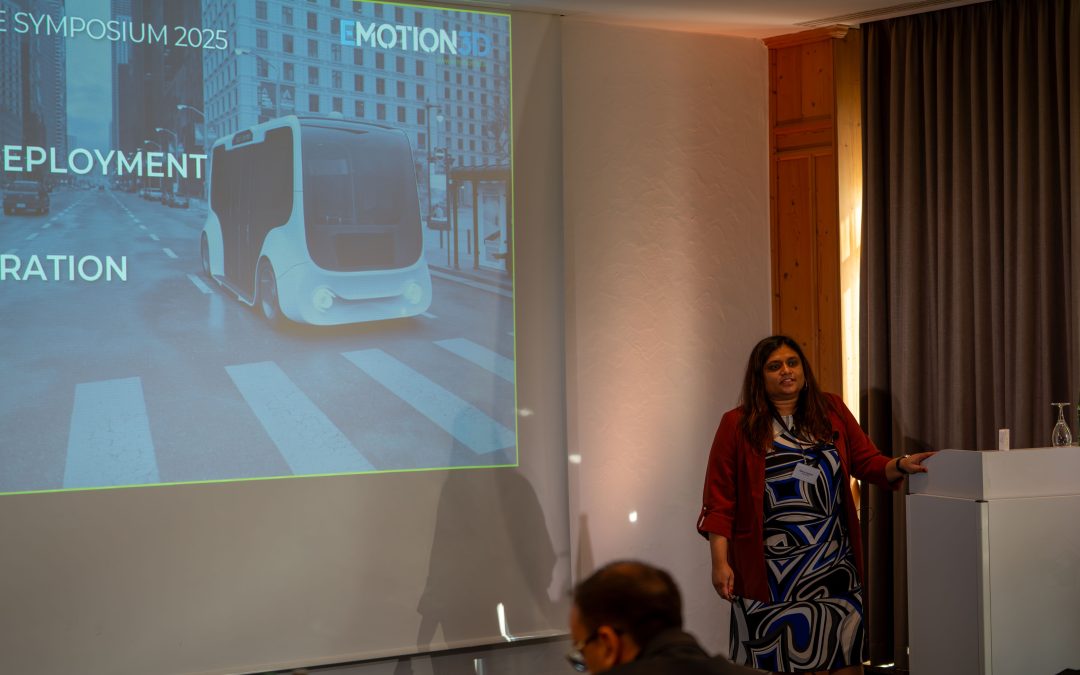Last week Niketa Engineer, our Senior Software Quality Manager at emotion3D, spoke at the exida Automotive Symposium in the Bavarian Alps, a gathering of innovators in the areas of safety, AI, cybersecurity, and automotive software. This month’s blog details her impressions and experiences at exida.
My Keynote at exida: From Dataset to Deployment
The event was packed with interactive discussions, real-world challenges, and pressing questions about how we design the next generation of safe, dependable automation.
I focused on how emotion3D is tackling the toughest challenges in bringing robust, transparent Driver Monitoring Systems (DMS) to market. Data management, testing, synthetic scenarios, intelligent fallback strategies, and continuous improvement were central themes.
Main discussion points were:
- Data management takes work: tracking, cleaning, and ensuring traceability are major overhead when building safe ML.
- Testing is harder than ever: covering edge cases and validating performance (especially with synthetic data) is essential for true safety, not only compliance.
- Safety is not a “once and done” effort: runtime monitoring, fallback logic, and rapid adaptation to field drift are essential tools.
- Building trust through evidence: We maintain ongoing compliance by qualifying every tool and capturing evidence for regulators and customers.
The event was full of real-world stories. I enjoyed the honest questions about edge cases, fallback logic, and the future of automated safety. The “Owl vs. Lizard” analogy, showing how DMS can switch modalities based on attention, sparked lively discussion and a few laughs.
The Road Ahead: Challenges and Inspiration
- Building transparency and trust in AI decisions – black box becomes glass box.
- Aligning technical safety with real human behavior and emerging regulations.
- Fostering collaboration: We need safety experts, engineers, and users working together.
The symposium was enriched by diverse perspectives on building trust and transparency into automotive systems. There was a strong emphasis on moving beyond simple compliance toward justifiable safety, particularly with the rise of embodied AI and increasingly connected vehicles.
Many discussions centered on the urgent need for unified approaches blending functional safety, SOTIF, and cybersecurity, as well as the importance of rigorous process, tool qualification, and evidence collection in an evolving regulatory landscape.
Open-source tools played a prominent role in these conversations as key drivers of accessibility, transparency, and innovation. While open-source can accelerate development and community collaboration, it also brings new responsibilities in vetting code quality and achieving compliance for safety-critical applications, making it a central pillar in the future of automotive engineering.
I am grateful for everyone’s feedback and for the many offers of partnership from peers. Our work at emotion3D benefits from this thriving, collaborative safety community.
Conclusion
As AI becomes more “embodied”- from cabins to neighborhoods to the open road – we must stay agile, transparent, and ethically focused. The journey is not just about advancing algorithms or taming machine learning. It is about building systems people can trust in every situation and for every deployment.

